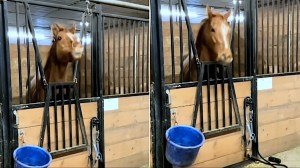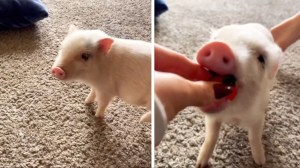NASA released the first set of absolutely stunning images of deep space stars and distant galaxies billions of light-years away, all taken with the recently deployed James Webb Space Telescope. This telescope, named after longtime NASA administrator James E. Webb, is far more powerful than the Hubble Telescope and can capture distant images in much less time. Additionally, the images are far sharper and geographically accurate due to the new telescope’s Near-Infrared Camera (NIRCam).
NASA’s James Webb Space Telescope has delivered the deepest and sharpest infrared image of the distant universe so far. Webb’s First Deep Field is galaxy cluster SMACS 0723, and it is teeming with thousands of galaxies – including the faintest objects ever observed in the infrared. ….This deep field, taken by Webb’s Near-Infrared Camera (NIRCam), is a composite made from images at different wavelengths, totaling 12.5 hours – achieving depths at infrared wavelengths beyond the Hubble Space Telescope’s deepest fields, which took weeks.
A live announcement was made at 10:30 AM (EDT) on July 12, 2022.
The telescope also returned an incredible set of images of a dying star within the Southern Ring Nebula.
These two stars put a new spin on “til death do us part.” The dimmer star, locked in orbit with the younger, brighter star, is dying — expelling gas and dust that Webb sees through in unprecedented detail. In fact, Webb reveals for the first time that the dying star is actually cloaked in dust.
The telescope also detected water in the atmosphere of a distant planet.
The James Webb Space Telescope has spotted the unambiguous signature of water, indications of haze, and evidence for clouds (once thought not to exist there) on this planet. This is the most detailed exoplanet spectrum to date.?
Here’s a stunning, never before seen image of the colliding galaxies that make up Stephen’s Quintet.
In an enormous new image, NASA’s James Webb Space Telescope reveals never-before-seen details of the galaxy group called “Stephan’s Quintet.” The close proximity of this group gives astronomers a ringside seat to galactic mergers and interactions
The final image of the day features a cosmic cliff that clearly reveals the stars within Carina Nebula.
The seemingly three-dimensional “Cosmic Cliffs” showcases Webb’s capabilities to peer through obscuring dust and shed new light on how stars form. Webb reveals emerging stellar nurseries and individual stars that are completely hidden in visible-light pictures. This landscape of “mountains” and “valleys” is actually the edge of a nearby stellar nursery called NGC 3324 at the northwest corner of the Carina Nebula.






